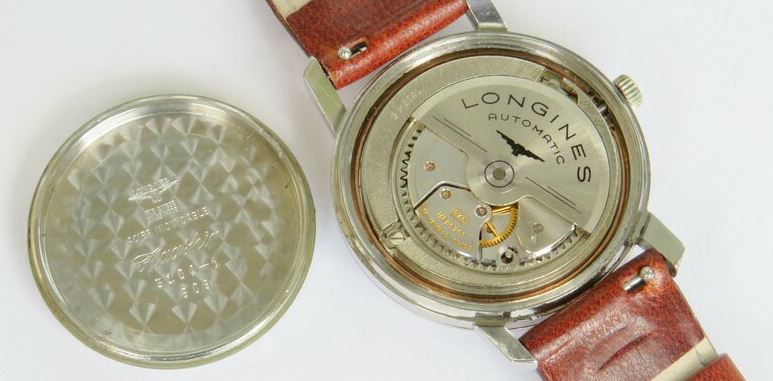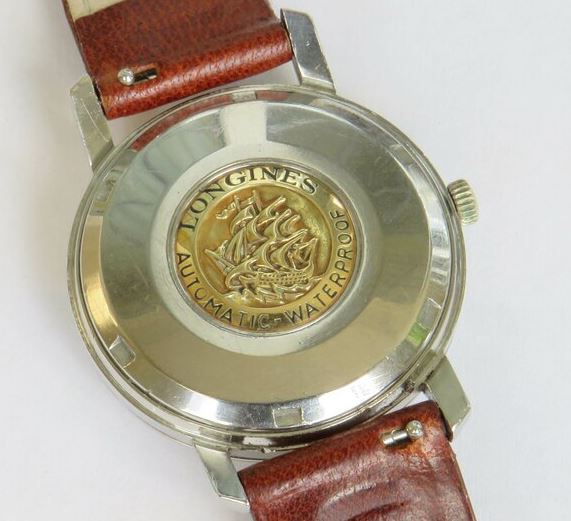I have written about vintage Longines Flagship models in the past. I have owned a modern Heritage version and have always been on the lookout for a classic vintage Flagship. Last time, it was another case of the “one that got away”. However, this time I got lucky and have a nice Longines Flagship automatic ticking strongly on my wrist as I type.

A brief history of Longines
Longines was founded in 1832 by Auguste Agassiz, a Swiss watchmaker, together with two business partners, Henri Raiguel and Florian Morel. The company’s original name was Raiguel Jeune & Cie. Agassiz became the sole proprietor in 1846 after both partners, who were attorneys by profession, retired from the watch business. Shortly afterwards, Agassiz introduced his nephew, Ernest Francillon, to the company. The brand soon developed a strong reputation for producing high-quality timepieces and became known for its precision and reliability.
In 1867, the company established its first manufacturing facility in the southern part of Saint-Imier, in an area known as Les Longines, meaning “long meadows.” This location would eventually inspire the company’s new name, Longines. In 1889, Francillon registered the now-famous Longines logo featuring a winged hourglass, which, according to the World Intellectual Property Organization (WIPO), is considered the world’s oldest unchanged logo still in use (Longines at Chronopedia).

At first, Longines operated under the traditional établissage system, assembling watches from components supplied by other manufacturers. In 1867, the company produced its first in-house movement, the calibre 20A, followed by its first chronograph movement in 1878. Throughout the 20th century, Longines continued to advance the art of watchmaking and became a leader in sports timing, serving as the official timekeeper for numerous international sporting events, including the Olympic Games. Longines’ enduring commitment to precision, innovation, and elegance has earned it a devoted following among watch enthusiasts and collectors worldwide.
Flagship range
In the 1950s, Longines was among the first watchmakers to introduce dedicated collections. The Longines Conquest debuted in 1954, followed by the Longines Flagship in 1957. Both of these collections remain part of the brand’s Heritage lineup today. The term “Flagship” refers to the lead ship in a fleet, which carries the flag of the Commander-in-Chief. On vintage Flagship models, the enamel case-back emblem typically features an intricately detailed Caravelle ship rendered in gold and blue. In this example, I don’t see any trace of the enamel, even under magnification. Perhaps the blue enamel has faded or been lost, which is understandable for a watch now over 65 years old. The same distinctive ship motif continues to appear in the modern Flagship collection today (Longines Flagship at The Swatch Group).
While the Flagship was conceived as a classic gentleman’s dress watch, it also incorporates practical features more commonly associated with sportier timepieces, namely, water resistance and shock protection.
Longines calibre 340
This Flagship uses a 17-jewel calibre 340 automatic movement, which is keeping good time. The movement is signed with the Longines name, and it carries the Longines serial number 11,529,765, which dates it back to 1960.
Introduced in 1960, the calibre 340 was the result of several years of development. Its offset rotor occupies a significant portion of the movement’s width, contributing to its notably large size. In general, a larger balance wheel, with its greater inertia, provides more stability in a watch movement. Once in motion, a large wheel is more resistant to disruption. This makes it less susceptible to performance variations caused by minor shocks. However, this improved stability comes at a mechanical cost: a larger balance requires more energy to drive, necessitating a stronger mainspring, thicker pivots, and other reinforced components to maintain reliable operation. The 340 calibre was noted for its precision and quickly gained a strong following among enthusiasts in the early 1960s.

Ball-bearing rotor
According to the Ranfft database, the calibre 340, measuring 12 lignes (a traditional Swiss unit of movement diameter), featured a rotor mounted on ball bearings, a notable advancement over the jewelled pivots used in earlier Longines automatics. This innovation significantly reduced friction, allowing the watch to self-wind with the slightest wrist movement. The movement’s design is especially striking. It features a toothed outer ring extending from the rotor. This pivots in both directions to wind the mainspring via an ingenious patented satellite wheel switcher.
The balance is a screwless Glucydur type, Glucydur being a patented beryllium bronze alloy. These are reserved for the high-quality vintage watch movements (as opposed to the nickel balances used in mass-produced calibres) (Glucydur at Grail Watch Wiki). The Kif-Ultraflex shock protection system, also employed here, was a hallmark of top-tier Swiss movements during the 1960s.
Case and dial
The watch measures 35mm in diameter, excluding the signed Longines winding crown and the lugs. The case is stainless steel and overall is in very good condition. The back of the watch has the 18-carat gold Longines Flagship medallion. The back of the case states that the watch is waterproof. However, as with any vintage watch, it should be kept away from water and moisture.

The inside of the case back is also signed Longines Flagship. The lens is in excellent condition. The signed dial is in its original finish with Sword hands, Baton hour markers and centre seconds hand.
Summary
Longines is a reputable brand in the world of luxury watches. This particular watch is appealing because of the quality of the 340 movement and the patina the watch has acquired over the last 65 years. I like the character and the charm of a watch that has “lived” through its years. If I wanted something that looked new, I would just go into a local boutique… I want something different, a watch that has character formed by the ageing process.
Leave a Reply